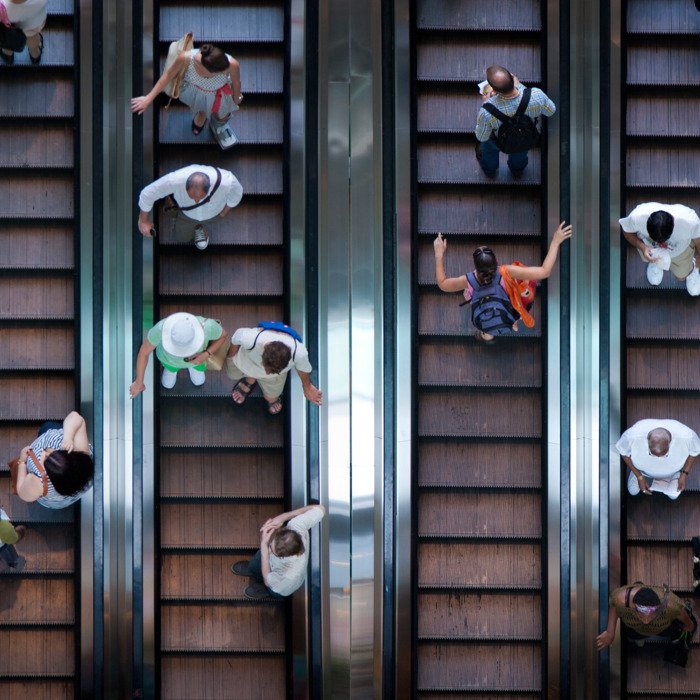There are no legally enforceable laws for pedestrian traffic. However, it does tend to follow a set of unwritten rules. Without even having to think about it; we follow them. This creates lanes of pedestrians as well, and human systems engineers know that pedestrian lanes are a natural occurrence in crowded environments. Designers make use of a variety of techniques for encouraging specific pedestrian traffic patterns. For instance, pedestrians are advised to ‘stand to the right’ on escalators. The right lane is designated for those who wish to stand on escalators whereas the left lane is designated for those who want to run or walk on the escalator.

However, the question or the hot debate if you will is whether having two lanes of pedestrian traffic on an escalator help the overall efficiency of the system or hamper it? Should both lanes be used for walking or standing? According to a study, 74.9% of pedestrians opt for standing on the escalator rather than walking. Do we really need a lane for the remaining 25.1% of pedestrian traffic?
When designers are planning spaces including corridors, buildings, or roads; they factor in the space that is required by each person in the environment. Space varies based upon how space will be utilized. For a pedestrian, the ‘buffer zone’ is the space a person needs for feeling comfortable. This buffer zone varies based on activity. A person standing requires a bit over three square feet of space whereas a person walking will require over eight square feet of space. You can notice right away that an escalator with pedestrians only standing can cater to twice the amount of pedestrians at the same time as opposed to pedestrians walking.

Designers were able to obtain a 27% increase in the hourly capacity of escalators by opting ‘standing only’ policy on congested escalators at a subway station in London. Since pedestrians were not allowed to walk on the escalator, the number of people that could be catered by the escalator increased. For planners, a highly efficient escalator is the escalator that has the highest output – the one that carries the highest number of people to the destination.
However, the change had a mixed response. The social convention is to make things easy for the individual traveler. By doing so, the system-level efficiency is disregarded. For instance, a pedestrian allowed to walk on an escalator might be able to exit the escalator quicker but will slow down the overall travel time for others. A designated walking lane on the escalator will also have its own hurdles such as varying speeds of walking.

Here’s an interesting fact to close the discussion; have you ever noticed that we tend to do what the person next to us on the escalator is doing? If the person is standing, we will stand. If the person starts to walk, we will begin walking as well. So, the next time you get to an escalator stand on both sides with your traveling companion to help the crowd move quicker on the escalator.



The people who have choosen to stand have chosen to take the slower path of their own accord. To blame the walkers for slowing down someone who is just standing there is insanity.
I think,if the right side on a escalator is occupied by its maximum standee,the other pedestrians who would rather choose standing on there, will ,now, be forced to walk through on the escalator. And way more pedestrians will go faster. I wonder how the admin called it slow